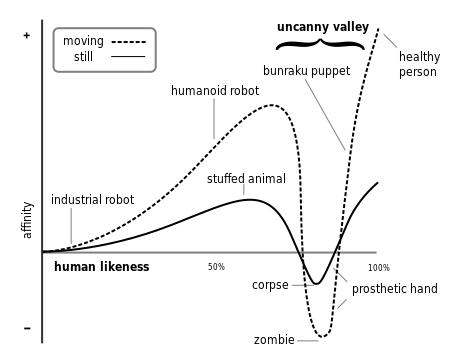- Thank you wikipedia. For the graphic as well.

Emotional response of human subjects is plotted against anthropomorphism of a robot, following Mori's results. The Uncanny Valley is the region of negative emotional response for robots that seems "almost human".
How do you make a technological architecture that is still human, and not repulsive? (Read 'too cheesy'?)
You might say that your home is an affective space: one which evokes certain emotions in you, and visitors you might have. You might also say that you can create a home, or presence, online which has a similar affect.
On a system like flickr, you deal with organic information, and try to manage it for yourself as best you can, relying on people you know, subsidiary network effects and the odd serendipitous 'oooh' moment.
For the foreseeable future at least, you will need certain to be able perform certain maintenance tasks, hence an element of pure function. Classic structured task-oriented design stuff.
If the trick is indeed navigational, then perhaps conceiving of a design that is (affective x organic) + functional would be useful.
But, how the hell do you design a space like that? Where are the edges? It can't be edgeless, can it?
Note to self:
- Architecture and Structures of Consciousness
- MIT Media Lab: Affective Computing Group
- watch out for the whole making-up-a-wanky-forumla thing
(Thanks to Jason for connecting some dots.)